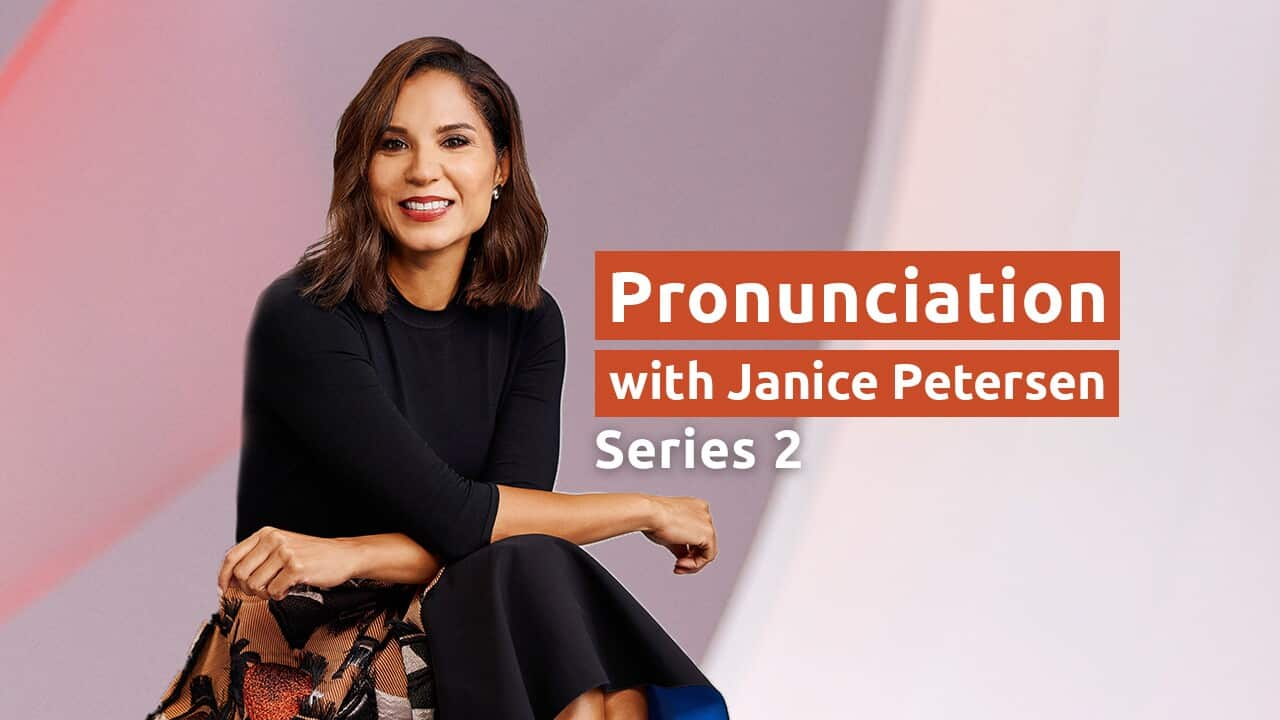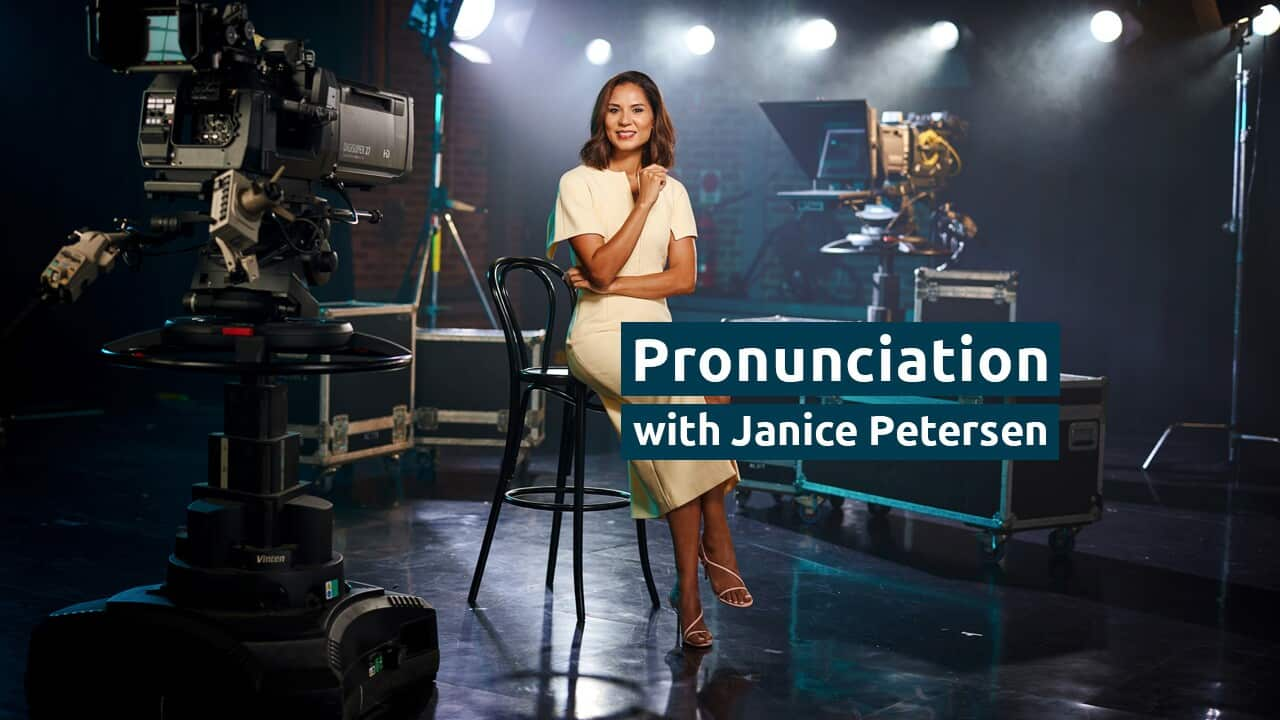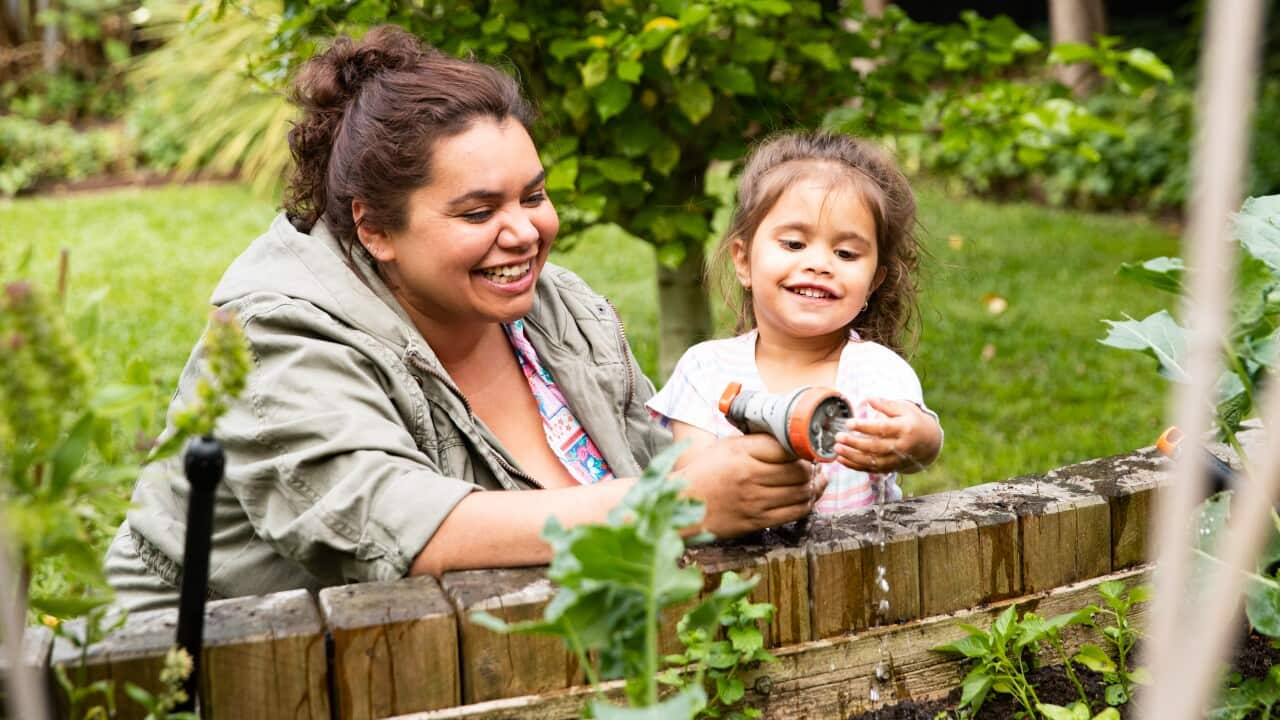Key Points
- Learning objectives: Can pronounce /iː/ and /aɪ/ (Sheep and eye)
- First language influence: Cantonese speakers under-differentiate the distinction between long and short vowels. Vowels are problem areas for Swahili speakers as Swahili only has five vowel sounds: /i/, /e/, /u/, /a/, and /o/. /iː/ can be challenging for Turkish, Dari, and Persian speakers. /iː/ does not occur in Indonesian.
- Text for practise:I scream, you scream, we all scream for ice cream.
- Minimal Pairs: /iː/ beak, peak, leave, peel, bean /aɪ/ bike, pike, live (adjective), pie, bye
This lesson suits all learners at all levels.
Check out the rest of Season 2

Improve your pronunciation | Season 2
If you missed the first season of our popular podcast, now's your chance to catch up!

Improve your pronunciation | Season 1
Transcript:
(Note: This is not a word-for-word transcript)
Hello! I’m Janice Petersen from SBS World News.
Pronunciation is about speaking clearly so you can communicate well with others. It’s not about changing your accent, because that is something that is part of you and your culture.
In this short five minute lesson you’ll get to practise and improve your pronunciation by listening and following along with me. So, let’s start…
I scream, you scream, we all scream for ice cream.
That’s what my daughters and I yell out when we’re on our way to get ice cream! My favourite flavour is pistachio and my daughters loves salted caramel. What’s your favourite flavour?
This tongue twister is fun and also a little bit challenging because of the similar sounding vowel sounds.
Vowels are made up of the letters a, e, i, o, u and sometimes y. These letters make around 20 different sounds. Vowels are different from other letters because when we make them air leaves our mouth without any blockage from our tongues, lips, or teeth.
In this lesson, we’re going to practise the long vowel sound /iː/ [ee] in ‘we’, ‘cream’, and ‘scream’ and the /aɪ/ [eye] sound in eye and ice.
The /iː/ [ee] sound can sometimes be challenging for learners of English because it isn’t in your first language. With some practise you’ll get it.
Start by moving your tongue to the top of your mouth so that the sides of your tongue touch your back teeth. Your lips should be relaxed and a little open.
When you make the sound, you will hear your vocal cords vibrating. Listen carefully: ‘we’. This sound is also in the words: beak, peak, and bean.
The /aɪ/ [eye] sound is a dipthong [dif-thong].
This means it’s made up of two sounds. It’s a combination of the /a/[ah] sound and the /ɪ/ [ih] sound. Listen carefully to the two sounds together: ‘eye’ and ‘ice’
This sound starts by putting your tongue on the floor of your mouth and opening your mouth into an O shape.
As you make the sound, your mouth will close so that your teeth are nearly touching, your lips will stretch out, and your tongue will slide back a bit. Have a listen to these words: bike, pike, and bye.
Try listening again, and say the words with me:
- Beak, bike
- Peak, pike
- Been, bye
Let’s put it all together and have some fun with it. Shout it out as loud as you can:
I scream, you scream, we all scream for ice cream.
Let's listen to how these beginner learners from the Randwick City Library English Conversation class did.
Students
I scream, you scream, we all scream for ice cream.
This tongue twister was first created as a way to advertise ice-cream and was even published as a jazz song in the 1920’s.
So, the next time you’re on your way to get ice cream with your friends or family have some fun and try saying this tongue twister.
CREDITS
Thanks to our educational consultant, Natalie Oostergo from IES College and the.





